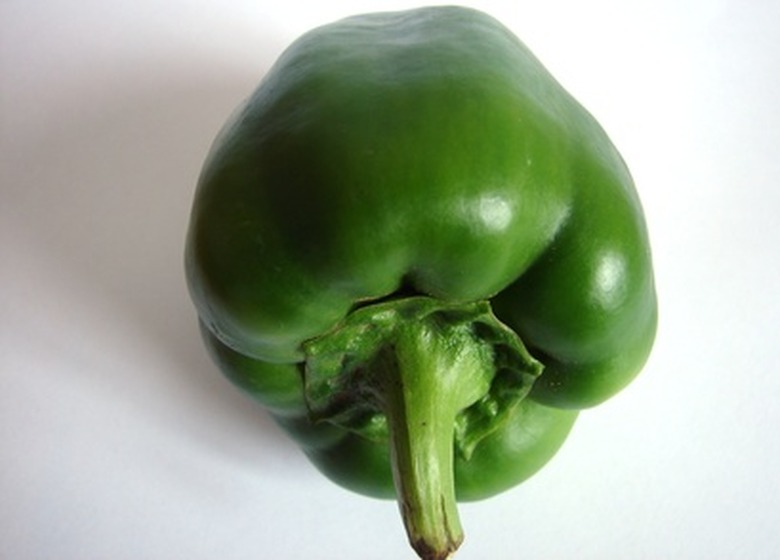Brown Spots On Green Peppers In A Garden
Most pepper diseases present symptoms primarily on the leaves and stems. Two problems may cause spots to develop on fruit: bacterial spot and blossom-end rot.
Bacterial Spot
Bacterial spot affects both peppers and tomatoes, causing fruits to become dotted with small brown lesions. Although a few treatments are available, they are not very effective, according to the University of Massachusetts Extension. Because the disease overwinters in plant debris, remove and destroy infected plants and rotate tomatoes and peppers to a new section of the garden next season to prevent reinfection.
Blossom-end Rot
Blossom-end rot produces brown, leathery patches on the ends of peppers and several other garden crops. These lesions invite secondary fungal infection. Calcium deficiency brought on by drought causes blossom-end rot, so providing adequate water treats and prevents the disease.
- Most pepper diseases present symptoms primarily on the leaves and stems.
- Two problems may cause spots to develop on fruit: bacterial spot and blossom-end rot.
Identification
When distinguishing between the two diseases, examine the rest of the plant closely for lesions. Bacterial spot affects all above-ground plant parts, including leaves and stems. Blossom-end rot affects only one part of the fruit.
Peppers Have Irregular Brown Spots On Their Leaves?
Irregular brown spots on the leaves of your pepper plants are indicative of leaf spot, a bacterial disease that affects both pepper and tomato plants in the garden. For this reason, bacterial leaf spot lesions are irregular in shape. The irregular brown spots on a pepper plant suffering from bacterial leaf spot may also appear wet or waxy. A severely infected plant suffers multiple problems including defoliation and fruit loss, as this disease also infects the pepper themselves. This renders your fruits inedible and causes heavy crop loss. If you find that the spots have overtaken the whole plant, or that your fruits are also affected, remove the entire plant to avoid infection of your other pepper plants. Because bacterial leaf spot pathogens also affect tomato plants, be sure to practice crop rotation, and do not plant peppers or tomatoes in the same area of your garden two years in a row.
- When distinguishing between the two diseases, examine the rest of the plant closely for lesions.
- If you find that the spots have overtaken the whole plant, or that your fruits are also affected, remove the entire plant to avoid infection of your other pepper plants.
References
- Mississippi State University Extension: Control Pepper Disease
- Harvest to Table: Pepper Growing Problems: Troubleshooting
- The American Phytopathological Society: Bacterial Spot of Pepper and Tomato
- San Francisco Seed Library: Planting Calendar for San Francisco
- Cornell University Vegetable MD Online: Vegetable Crops — Bacterial Spot of Pepper
